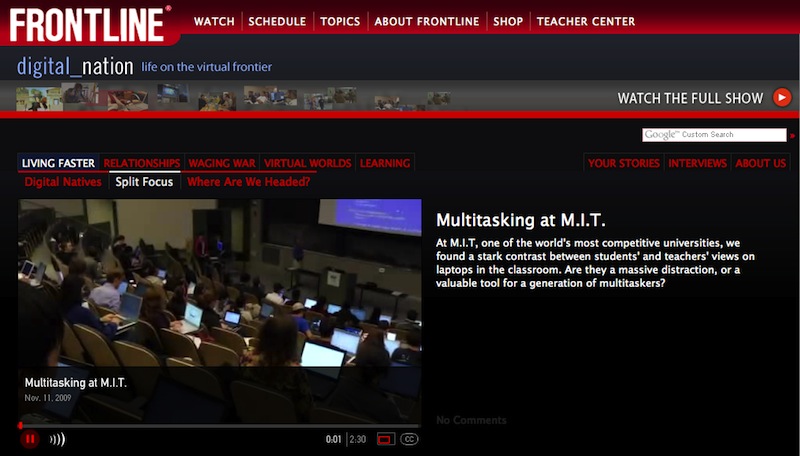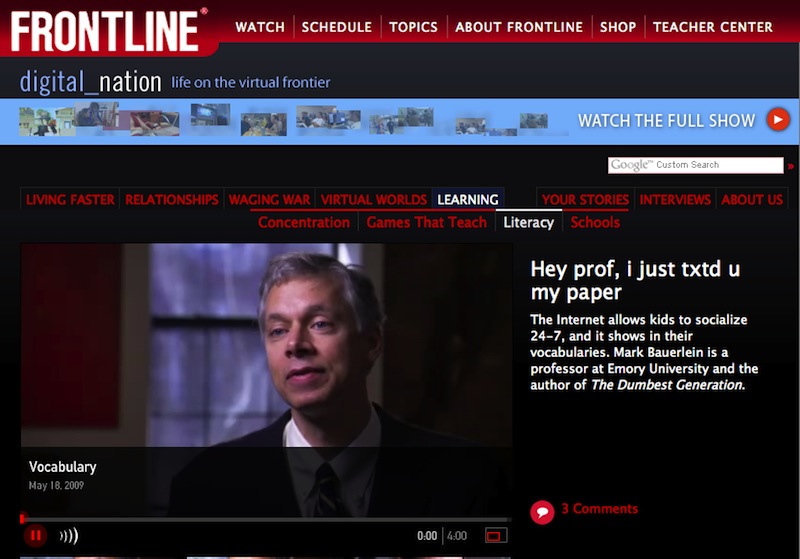Body (part 2/3): Distancing Us and Them
<< Digital Nation's early display of students like Eliza cultivates distance between its subject and its viewer, as well as between students and the MIT professors who teach them. Clearly, we are to read Eliza as other and yet recognizable: an archetype whose commitments we understand because we know people like her. She is our student, our neighbor, our kid. As the video content and transcript selection 1 illustrate, the MIT professors who discuss students like Eliza call attention to how they are generationally different. Sherry Turkle, an engaging voice, states that the project of reaching out to students like Eliza has shifted the goal of education over the past twenty-five years. Instructors, in short, are continually trying “to distract them” from the web.
While Turkle advocates bridging the gap between students and instructors, MIT professor David Jones is more pointed in his remarks: “There are two sorts of things you can test students about. You can test how well they are paying attention in lecture, and you can test how well they are absorbing material from readings you assign. And I don’t think they are doing either of those things well.” He continues, “It’s not that the students are dumb, it’s not that they’re not trying, it’s that they aren’t trying in a way that’s as effective as it could be because they are distracted by everything else.” A definite us and them operates when these professors characterize their students. Even as top performers at a preeminent US educational setting, they still seem to be struggling to perform to our standards. From their educators’ point of view, something is holding them back.
How Does This Positioning Relate to Literacy?
Within this first chapter of Digital Nation, distraction becomes a keyword used to describe that something that contributes to declining academic performance. Through my analysis of images and representations, I suggest that connections to literacy are foundational to how pervasive distraction is represented in two ways. First, the chapter builds an implicit sense that digital reading and writing causes distraction. This warrant emerges through continual references to how writing technologies (like cell phones) and digital literacy practices (like instant messaging, SMS texting, and social media use) cause an inability to focus. From Eliza’s G-chat references to camera shots that pan across students Facebooking during class, digital literacy practices anchor the representations of distraction in the documentary’s first chapter. The second connection between distraction and digital literacy is built more explicitly later in Digital Nation, when Mark Bauerlein credits lack of focus emerging from technology use with widespread decline in general reading and writing ability due to students' pervasive writing in social digital spaces.
As the video content and transcript selection 3 suggest, the claim that distraction deteriorates literacy in general completes a tightly wound argumentative structure that assembles attitudes, beliefs, and values related to contemporary literate practice. Digital Nation suggests that distraction separates us from them—students from educators, parents from children—and is related both to self-sponsored digital reading and writing practice and academic performance. >>

